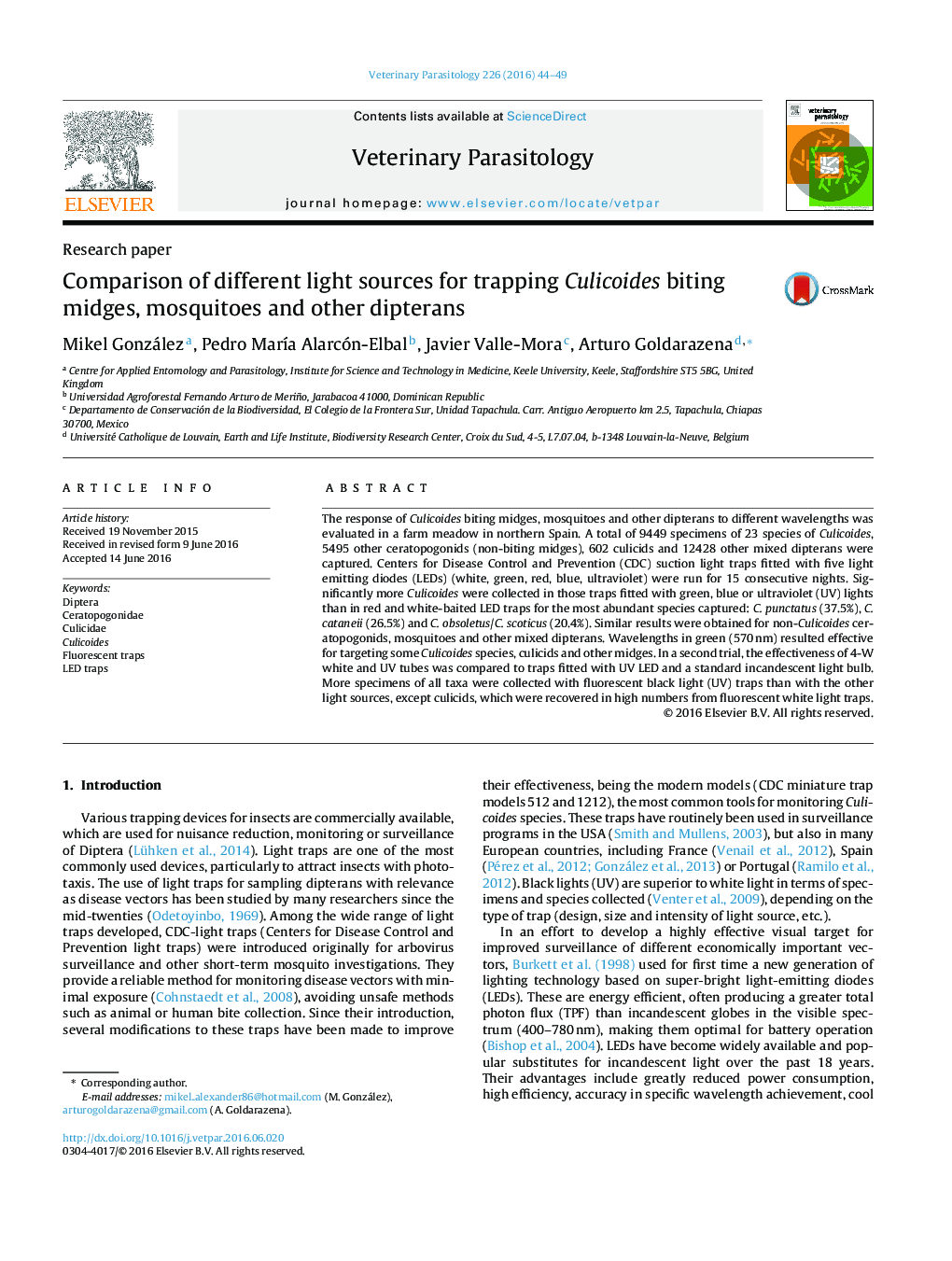| کد مقاله | کد نشریه | سال انتشار | مقاله انگلیسی | نسخه تمام متن |
|---|---|---|---|---|
| 5802008 | 1555650 | 2016 | 6 صفحه PDF | دانلود رایگان |
- Biting nematocerans and mosquitoes showed a clear affinity to fluorescent light that is more efficient than incandescent and LED lights.
- Vectors of important diseases such as Culicoides obsoletus/C. scoticus are highly attracted to traps fitted with ultraviolete (UV) and green LEDs.
- The potential use of traps equipped with light sources emitting in wavelenghts close to 570Â nm (green colour) is highlighted.
The response of Culicoides biting midges, mosquitoes and other dipterans to different wavelengths was evaluated in a farm meadow in northern Spain. A total of 9449 specimens of 23 species of Culicoides, 5495 other ceratopogonids (non-biting midges), 602 culicids and 12428 other mixed dipterans were captured. Centers for Disease Control and Prevention (CDC) suction light traps fitted with five light emitting diodes (LEDs) (white, green, red, blue, ultraviolet) were run for 15 consecutive nights. Significantly more Culicoides were collected in those traps fitted with green, blue or ultraviolet (UV) lights than in red and white-baited LED traps for the most abundant species captured: C. punctatus (37.5%), C. cataneii (26.5%) and C. obsoletus/C. scoticus (20.4%). Similar results were obtained for non-Culicoides ceratopogonids, mosquitoes and other mixed dipterans. Wavelengths in green (570Â nm) resulted effective for targeting some Culicoides species, culicids and other midges. In a second trial, the effectiveness of 4-W white and UV tubes was compared to traps fitted with UV LED and a standard incandescent light bulb. More specimens of all taxa were collected with fluorescent black light (UV) traps than with the other light sources, except culicids, which were recovered in high numbers from fluorescent white light traps.
Journal: Veterinary Parasitology - Volume 226, 15 August 2016, Pages 44-49
